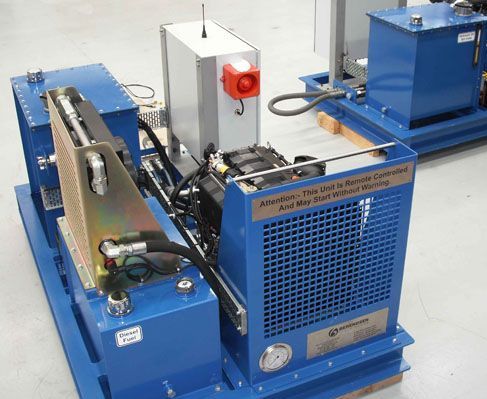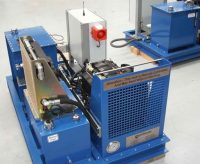Regardless of the size or complexity of a Hydraulic system, the simplest maintenance tasks can have a huge effect on the performance and lifetime of your system. By following a few hydraulic system maintenance tips, you can protect your system from damage, ensure longevity and optimum performance and save on repair or replacement costs.
Here are a few tips on hydraulic system maintenance to keep your hydraulic equipment operating at its best:
- Check your filter indicators. Indicators monitor the amount of contamination caught by a filter. They can display the level of contamination visually (using a gauge or a pop-up indicator), electrically or both. Once an indicator shows that a filter has reached its maximum allowable contamination holding capacity, that filter needs to be replaced. If left unchecked, the filter can begin to bypass fluid (if fitted with a bypass valve) and will no longer protect your system from contamination. Check the indicators with cold oil at start-up for a forward warning, or to check that a gauge style indicator is working properly.
- Sample your oil. Contamination is responsible for the majority of problems encountered in these systems as it can cause blockages and accelerate wear in all hydraulic components. Sampling your oil and having it tested for solid particle contamination, water and other undesirable constituents can prevent the need for costly Hydraulic repairs in the future. Samples should be taken from a designated sample point to ensure consistency across measurements, ideally from a test point in an active return line. Sampling from a reservoir drain or other stagnant source will result in inaccurate readings.
- Measure temperatures. Temperature has a large effect on the viscosity of your oil and if your oil viscosity is outside the working range of your system components it can severely reduce the lifetime of your system. For instance, low viscosity reduces the film thickness between moving components, causing wear. High viscosity can cause excessive pressure drop in suction lines leading to cavitation. Your reservoir temperature often differs from the actual working oil temperature. In this case a non-contact thermometer (temperature gun) may be used on working lines.
- Test performance. Slowly decreasing performance over a long period of time can be expected with any hydraulic system. Rapidly decreasing performance can be a precursor for catastrophic failure. Getting to know your system by monitoring actuator speed, case drain flow, temperature and oil levels can help prevent the more expensive failures by predicting them.
- Keep your equipment clean. Even though dirt and grime on the exterior of your equipment is harmless, contamination can enter your system when hydraulic components are disconnected for maintenance or relocation, when filter elements are changed or when oil is added. When a cylinder retracts, contamination on the rod can also enter the system under the wiper seal.
By following these tips on hydraulic system maintenance, you can ensure the reliable performance of your system for years to come.
Should you require assistance with any preventative maintenance measures, contact Berendsen. We can provide Hydraulic solutions to keep your systems performing their best, as well as tried and trusted solutions for a range of maintenance related issues. To know more, get in touch with us today.


